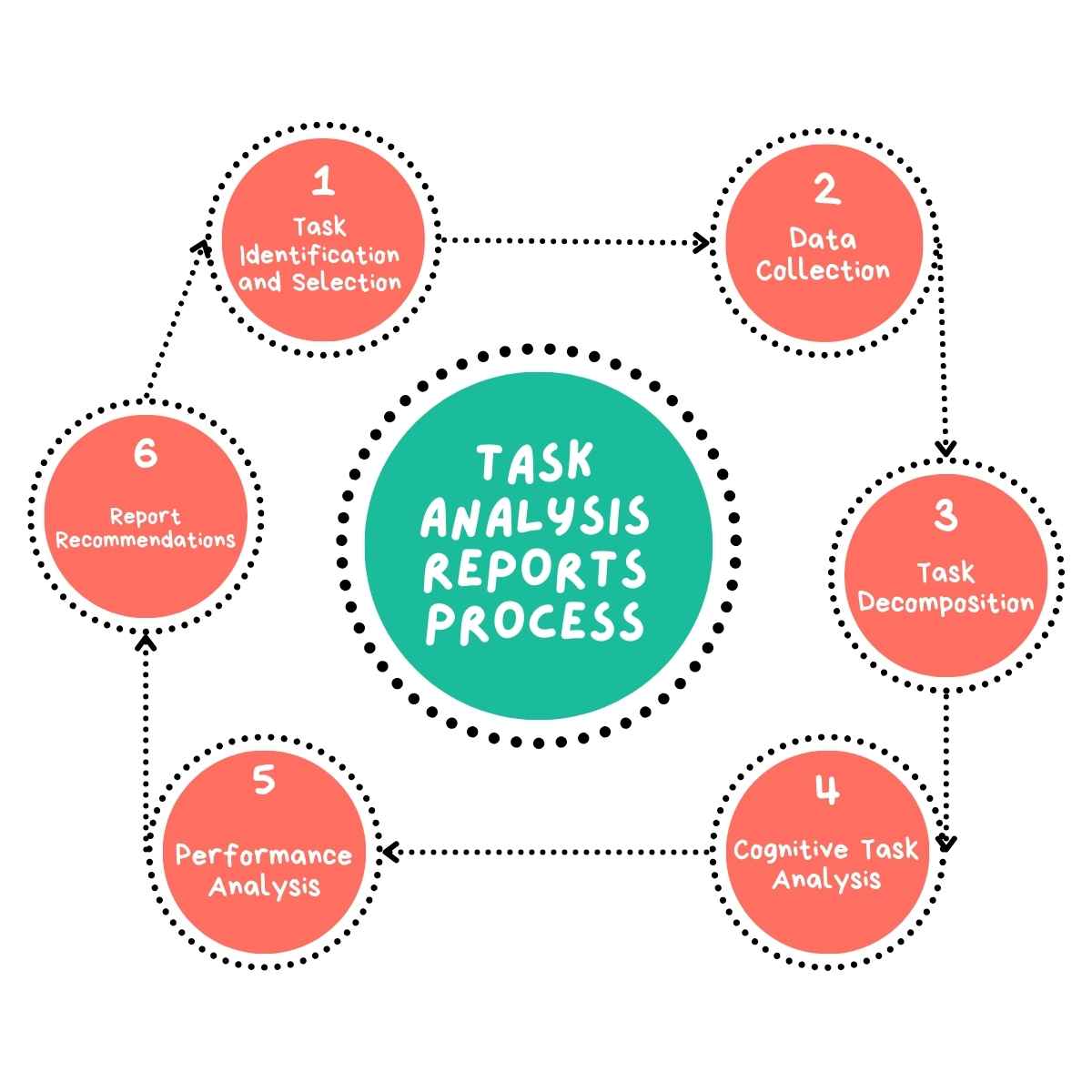Task Analysis Reports optimise user workflows and improve task efficiency, identifying and addressing inefficiencies in your user tasks, leading to a more streamlined and effective user experience.
Who needs Task Analysis Reports?
- UX designers optimising user workflows
- Product managers streamlining user journeys
- Development teams reducing task complexity
- Business analysts measuring process efficiency
- Stakeholders improving conversion paths
What is a Task Analysis Report?
A Task Analysis Report examines how users perform tasks within your product or system. It identifies inefficiencies, provides a detailed breakdown of user workflows, and offers recommendations for improvement. Task Analysis systematically breaks down user activities to understand the steps, decisions, and pain points in completing goals. Conducting detailed task analysis helps identify user goals and the steps required to achieve them, leading to more intuitive and error-resistant designs (Nielsen Norman Group, 2020).

Why Task Analysis Reports Matter
✓ User Success: Task analysis and usability testing improve task completion rates and efficiency, helping users navigate interfaces more effectively (Nielsen Norman Group, 2023)
✓ Cost Reduction: Streamlined task flows and clear user paths reduce support requests and training needs, lowering operational costs (Interaction Design Foundation, 2023)
✓ Error Prevention: Conducting task analysis identifies usability issues early, preventing common user errors and improving overall interface effectiveness (UX Collective, 2021)
Conducting detailed task analysis helps identify user goals and the steps required to achieve them, leading to more intuitive and error-resistant designs (Nielsen Norman Group, 2020)
Benefits of Task Analysis Reporting
My Task Analysis Reports Process

1 Task Identification and Selection: I work with stakeholders to identify and prioritise key tasks for analysis.
Data Collection: I gather data on how users perform the selected tasks using various methods.
Task Decomposition: I break down each task into its constituent steps and sub-tasks, creating a hierarchical task analysis (HTA) diagram.
Cognitive Task Analysis: I analyse the cognitive processes involved in task performance, including decision-making, problem-solving, and information processing.
Performance Analysis: I evaluate task performance metrics such as completion time, error rates, and cognitive load.
Report Recommendations: Get detailed, easy-to-understand reports.
Why Choose UserFirst UX for Your Task Analysis?
With extensive experience in task analysis and a deep understanding of user behaviour, I provide reports that are detailed, actionable, and tailored to your specific needs. My approach ensures that you receive valuable insights to refine user workflows and improve task performance.
Expert Analysis
Benefit from my years of experience in UX research and task optimisation
Actionable Insights
Each task analysis is customised to your specific product and industry
Tailored Approach
Receive clear, implementable recommendations to improve your product’s usability
Comprehensive Reports
Get detailed, easy-to-understand reports that cover all aspects of task analysis
Ready to Optimise Your User Tasks and Workflows?
Contact me today to schedule your task analysis and receive a comprehensive report that identifies inefficiencies and offers actionable recommendations for improvement.
